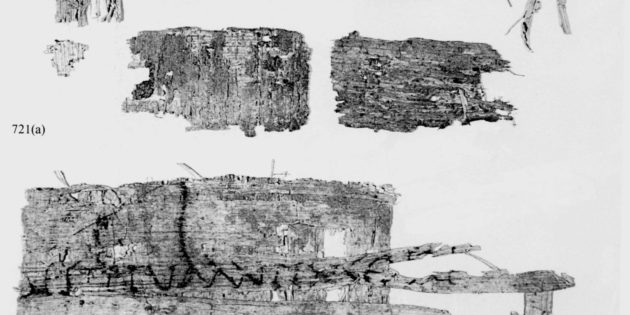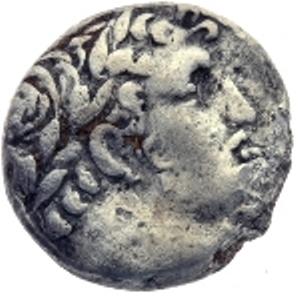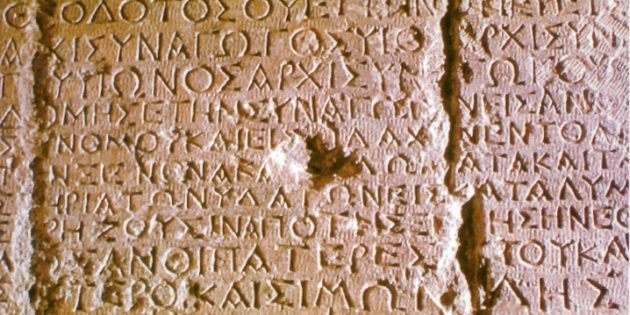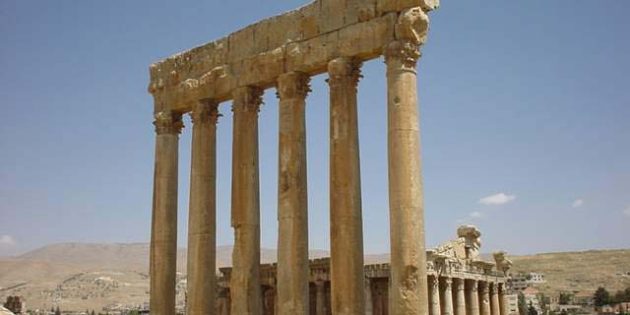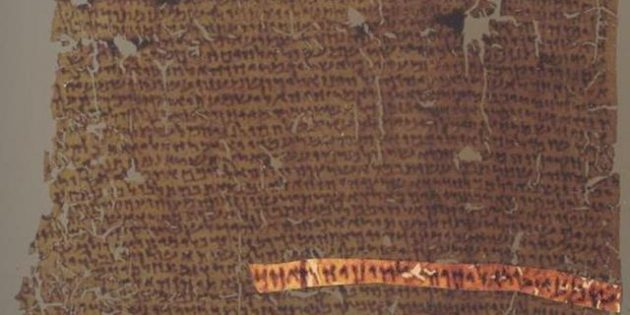Home » Bible and Beyond » Roman Period I
Roman Period I
Serekh ha-Milhamah This six-line fragment was written in a Herodian script of the first half of the first century CE. 1. ]Isaiah the prophet- [The thickets of the forest] will be cut [down 2. with an axe and Lebanon by a majestic one will f]all. And there shall come forth a shoot from the stump […]
Virgil’s Aeneid At Yadin’s excavation in Masada (1963-65) a small papyrus fragment of Virgil’s Aeneid was found. It was discovered along with other Latin papyri in one of the wall casements. It is assumed to have been brought there by the Roman garrisons stationed at Masada.
On the obverse of this coin is a laureate head of Melqarth (in his Hellenized form as Heracles) to the right. The reverse shows an eagle on a prow, a palm branch at its shoulder; in the left field is a club and the date Qθ (99 of the Tyrian era); in the right field […]
Photo courtesy of Israel Antiquities Authority. In Dec. 2007, archaeologists digging in the City of David area announced that they had discovered the ruins of a large building. Archaeologist Doron Ben-Ami said the structure likely belonged to Queen Helene of Adiabene. According to Josephus, Queen Helene converted to Judaism and left Adiabene (now in Northern […]
“Tomb of the Kings” A decorated sarcophagi from Tomb of Queen Helene of Adiabene bearing the inscription “Queen Tseddah.” The so-called “Tomb of the Kings” has been identified as the Tomb of Queen Helene of Adiabene (a kingdom of northern Mesopotamia), who with her family converted to Judaism during the reign of Claudius; they then […]
Herod the Great, who ruled under Roman tutelage, rebuilt the Temple Mount and embellished the Temple that stood at its center. The edifice was dedicated in 9 BCE and soon became famous as one of the most spectacular monuments of its time. Until it was destroyed in the year 70 CE, the Temple served as the […]
Temple of Jupiter Temple of Jupiter in Baalbek, Lebanon. It was the largest temple in the Roman Empire.
Crucifixion Bone Fragment Crucifixion Bone Fragment Close-Up The heel bone of Yehohanan ben Hagkol, a Jewish resident of Jerusalem. This heel bone punctured by an iron nail is the only tangible evidence for the practice of crucifixion to have been discovered in archaeological excavations. The bone was found inside an ossuary in a cave in […]
Aramaic fragment (4Q246) refers to a future deliverer, who “will be called son of God” and “will be called son of the Most High.” The [son of the] G[reat Master] shall he be called, and by His name he will be called. He will be said (to be) the son of God, and they will […]
Shema Yisrael Parchment from head phylacteries (tefillin) found at Qumran- “Hear, O Israel, the Lord our God, the Lord is one. Love the Lord your God with all your heart and with all your soul and with all your mind and with all your strength.” Since these phylacteries contain additional biblical material not required by […]


